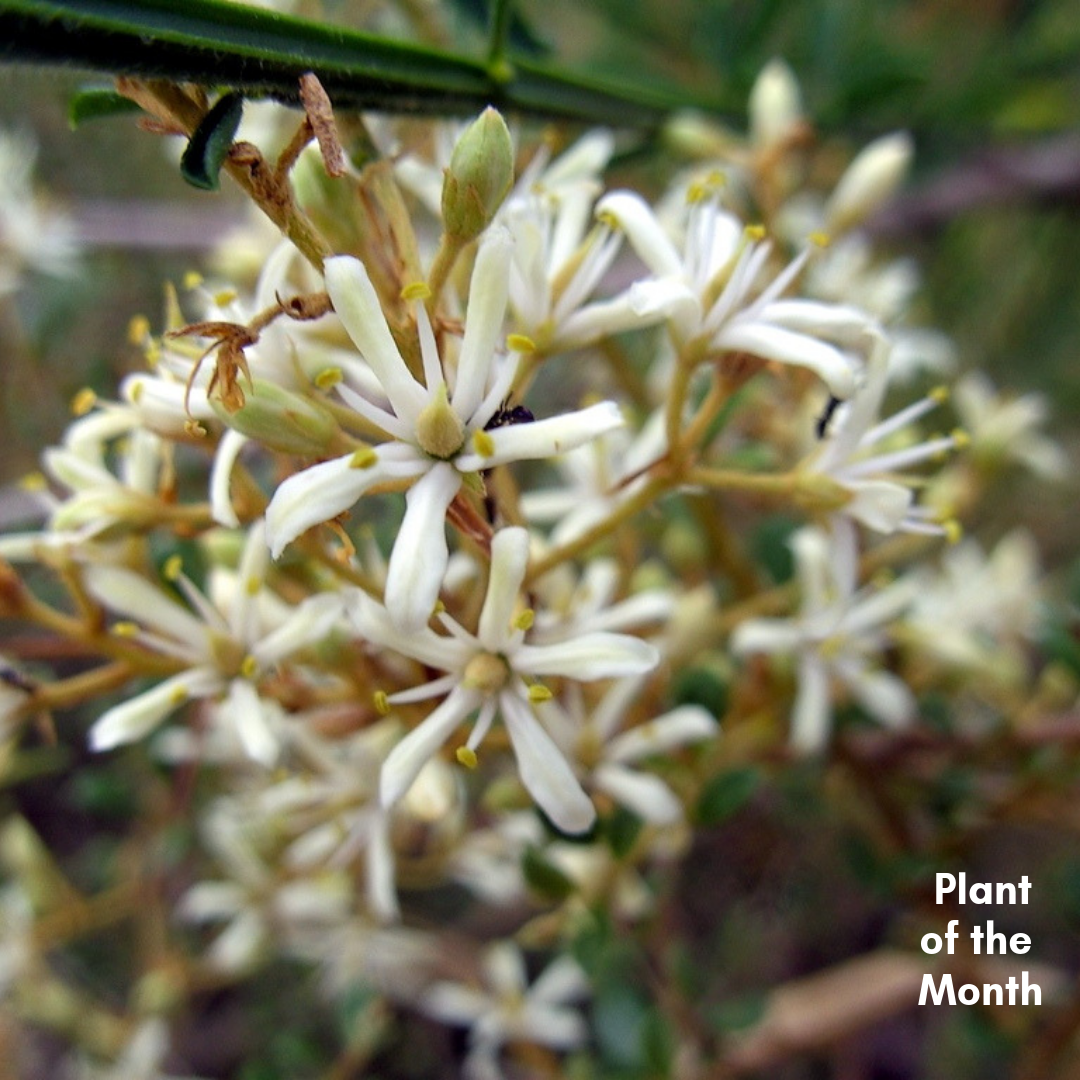Bursaria spinosa
Bursaria…from Latin, bursa, a purse, alluding to the purse-like seed capsules.
spinosa… From Latin spinosus, spiny or thorny, referring to the spiny branches.
Blackthorn is not especially popular in cultivation because of its prickly habit. Bursaria will often colonise cleared land and can be mistaken for an invasive weed. However, it is an important part of many vegetation communities, not only for its summer flowering but its dense, prickly branches provide protection for smaller birds against predators. The flowers are also an important source of nectar for butterflies. It is a hardy species which prefers a sunny or lightly shaded situation in most reasonably drained soils.
Bursaria’s nectar attracts predatory thynnid wasps. These insects parasitise Christmas beetle larvae (eucalypt leaf chewing insects). Bursaria also hosts tachinid flies who parasitise destructive insects such as the larvae of various moths and butterflies, beetles and grasshoppers. A number of important butterfly species (particularly the “Copper” butterflies) are reliant on Bursaria for their existence. The female Copper butterfly lays eggs on the plant. The newly hatched larvae crawls down the stem and goes underground where it seeks shelter within an ant nest (genus: Notoncus). At night the larvae feeds on the leaves of the Bursaria and secretesa sweet sugary substance which the ants feed upon. Later on, when the larvae emerge as an adult butterfly, the bursaria is in full flower providing a rich nectar source for the butterfly before the whole life cycle begins again.
Source: Australian Plants Society NSW



